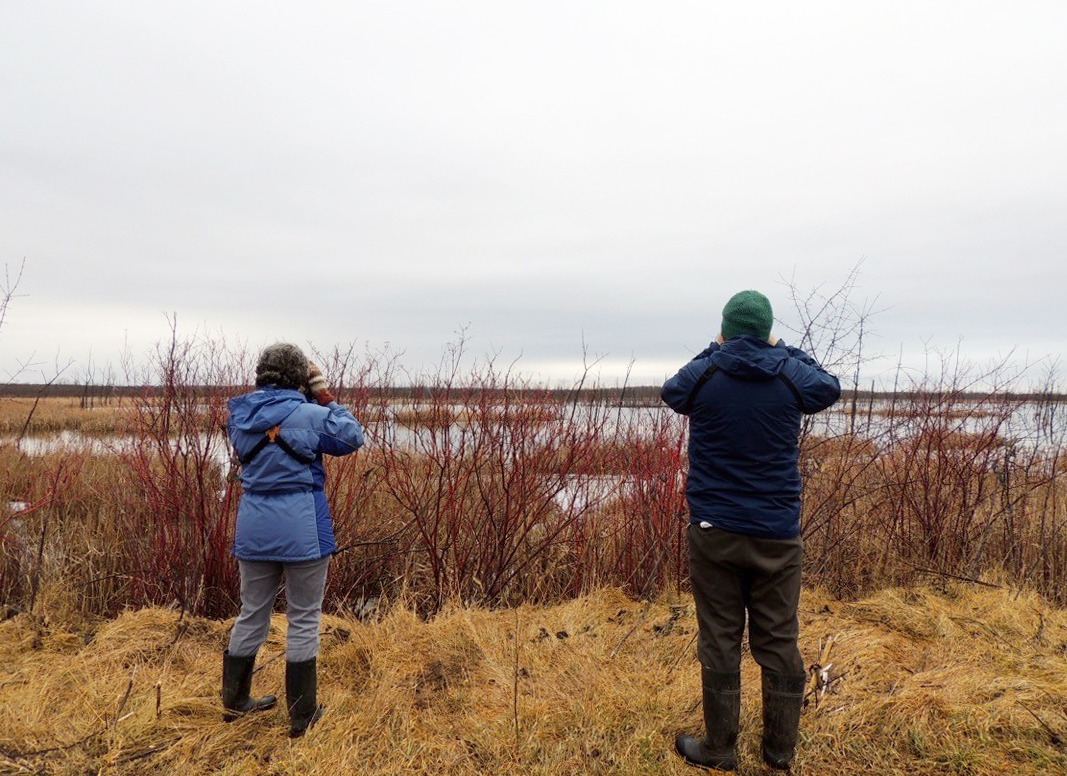By Amanda Bichel, Ontario Important Bird and Biodiversity Areas Coordinator, Birds Canada
Something is going on behind the scenes with the Landscape Science and Conservation team at Birds Canada. We’re calling it the IBA to KBA “crosswalk”, and it holds promise for the future of conserving birds and other wildlife in Canada.

Dean Evans hard at work. Photo: Dean Evans
Important Bird and Biodiversity Areas (IBAs)
If you aren’t familiar with it, an IBA is an Important Bird and Biodiversity Area. In Canada, sites are given IBA designation because they host impressive congregations of birds, and/or species at risk of extinction. IBAs have been around since the 1980s and much important work has been done in Canada since the late 1990s focusing on IBAs, including conservation planning, on-the-ground stewardship through the IBA Caretaker Network, bird monitoring, and more recently, BioBlitzes.

Northern Gannets Photo: Ellen Jakubowski
Key Biodiversity Areas (KBAs)
In 2016, the International Union for Conservation of Nature (IUCN) unveiled a mission to make a program for all biodiversity under one roof for the first time. Along with BirdLife International and 11 partner organizations, they introduced the concept of Key Biodiversity Areas (KBAs), building on the long-standing success of IBAs and other similar systems. Upwards of 75% of the KBAs identified around the world so far are IBAs. A team of organizations – the KBA Canada Coalition – is working collaboratively to identify KBAs in Canada.
The crosswalk between IBA and KBA systems
The crosswalk was a close look at which of our IBAs might qualify as KBAs, a kind of bridge to helps us transition from one system to the other. How did we do it? Canada is one of the first countries to do this, so there wasn’t a process laid out for us. We relied on our resourceful team, and especially our data guru Dean Evans. First, we compiled bird data that had been collected in IBAs and submitted to NatureCounts, Birds Canada’s central database. There were A LOT – over 17 million records. We also updated population estimates for bird species across Canada using information from BirdLife International, Partners in Flight, and the Committee on the Status of Endangered Wildlife in Canada. We then compared the data to the new and updated criteria for KBAs to see which IBAs, and the bird life at them, could meet standards for KBAs.

IBA Caretakers Cheryl Anderson & Peter Fuller at Prince Edward County South Shore IBA. Photo: Amanda Bichel
The Results
We looked at bird observations from the 582 IBAs currently designated in Canada, and population estimates for almost 600 species. Nearly 50,000 records met the criteria, and 482 sites are now considered candidate KBAs pending further review. Of these candidate sites, 268 are considered globally significant, and 214 nationally significant.
What could this mean for conservation?
Birds Canada has been looking at KBAs from the bird perspective so far, while the Wildlife Conservation Society of Canada is looking to identify KBAs across Canada for other species of flora and fauna in and outside of IBAs. Adding other organisms to the picture will deepen our understanding of the ecological value of each site, and confirms what we already know: that IBAs are not only good for birds, but for all biodiversity. This transition to KBAs presents a huge opportunity. We can identify priority sites in Canada to focus our conservation efforts on. We can monitor threats and species at sites that need it the most. And most importantly, we can engage and partner with a wider range of people and organizations interested in conserving wild spaces in Canada. This transition will take time, but it is underway, and we’ll keep you updated. Also stay tuned: an interactive story map that allows you to explore and learn more about KBAs is coming very soon!

